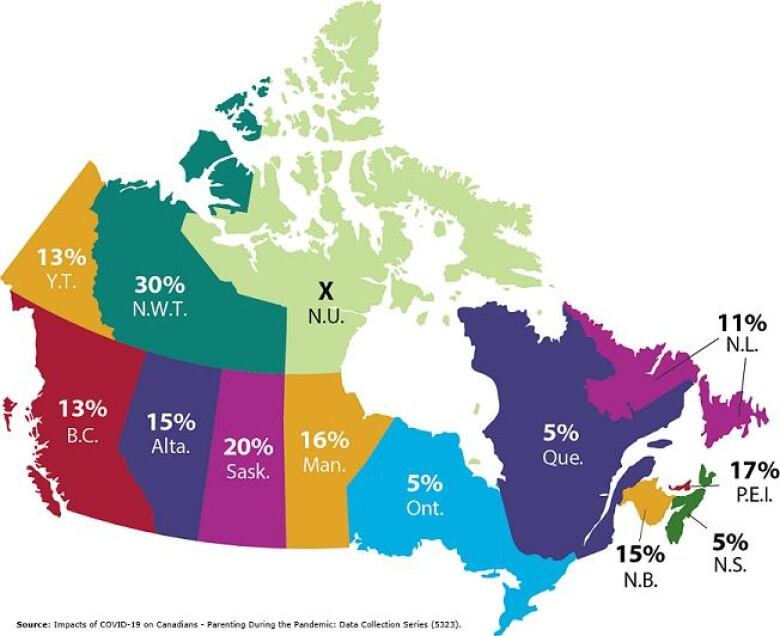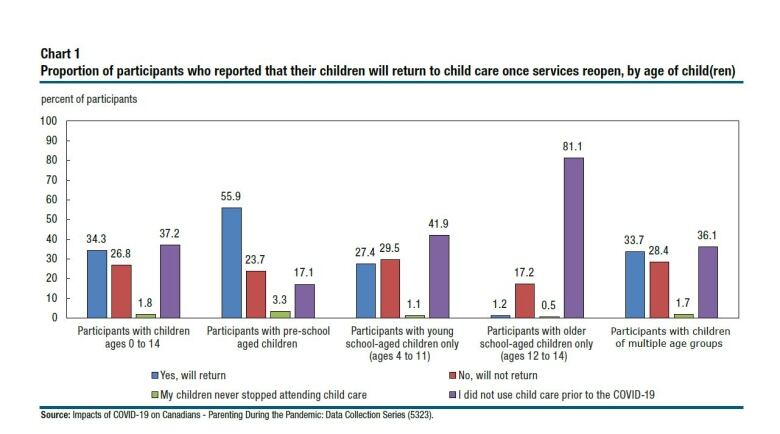P.E.I. has 3rd-highest rate in country for use of child-care services during pandemic
At 17% the Island is behind Northwest Territories and Saskatchewan

Prince Edward Island had some of the highest rates of continued use of child-care services during the COVID-19 pandemic, according to a new study released by Statistics Canada.
At 17 per cent, the Island was the third highest in reporting the continued use of child-care services, behind only the Northwest Territories, at 30 per cent, and Saskatchewan, at 20 per cent.
In the results released Wednesday, approximately one in 10 Canadian parents of children younger than 15 reported that their child or children were still attending child care during the pandemic, but those rates varied across the country.
Rates in Ontario and Quebec, for example, were just five per cent.
Child care is one of the services that have been "dramatically changed" since the COVID-19 pandemic, Statistics Canada said in its release of the study.

Prior to COVID-19, many parents were using child-care services for work, study, or other reasons, but now, parents' ability to return to work may hinge on their child-care options.
Each province and territory regulates its own child-care sector, meaning some services were shut down entirely, while others were open for essential workers, or remained available to the regular public.
Regulations vary province by province, as well, when it comes to COVID-19, and those varied regulations may have an impact on the responses submitted by participants.
While P.E.I.'s child-care centres are able to operatewithphysical distancing protocols in place,in other provinces, child-care providers may not be permitted to open, and may be working under different guidelines.
For those who were using child-care services, 35 per cent said they were using the same arrangements, at the same cost as before the pandemic. One in ten were using the same arrangement with different fees, while about half were using a different arrangement with different fees; 11 per cent were using different arrangements with the same fees.
Of those parents who responded they were not using child-care services, six per cent were still paying fees.

Almost 25 per cent of respondents said their children would not return to child care upon reopening of services. Of those participants, almost half said that they would not attend because they were concerned about the health of their child or other members of their household.
Thirty-two per cent would no longer need child-care services, while 13 per cent would have family or friends take care of their children, and six per cent said that they could no longer afford child care.
However, about one in three respondentssaid that once formal child-care services reopened, their children would resume attending.
Participants in the questionnaire who had a child with a disability were less likely to return to child-care services once they reopened 23 per cent, compared to 37 per cent of participants who did not have a child with a disability.
Parents of children with disabilities were also less likely to be using child-care services before the pandemic began.The report also suggests that further investigation of child care and the impact of COVID-19 for children with disabilities is warranted.
The data was collected through a crowdsourcing online questionnaire, from June 9 to 22, designed to collect information about family concerns and activities during the pandemic. About 32,000 participants completed the voluntary survey.
Crowdsourcing data is not collected using probability-based sampling. As a result, the findings reflect only the responses of those who participated in the questionnaire and thus cannot be generalized to the entire Canadian population.












_(720p).jpg)


 OFFICIAL HD MUSIC VIDEO.jpg)
.jpg)



























































































